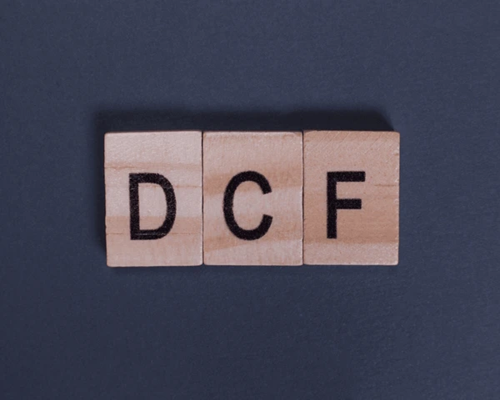INTRODUCTION
Discounted Cash Flow
Certainly! The Discounted Cash Flow (DCF) method is an approach
used to assess the worth of an investment by considering its
anticipated future cash flows. The fundamental concept underlying
DCF is that the current value of an investment is equivalent to
the current value of all its anticipated future cash flows.
DCF employs a discount rate to compute the current value of these
future cash flows, which represents the importance of time and the
uncertainty associated with the investment.
In simpler
terms, the greater the risk linked to an investment, the higher
the discount rate, and consequently, the lower the current value
of future cash flows.

How Discounted Cash Flow Work
The primary objective of a Discounted Cash Flow (DCF) analysis is
to gauge the financial returns an investor can expect from an
investment while accounting for the time value of money.
The time value of money theory posits that a dollar received today
holds greater worth than a dollar received in the future because
the former can be invested and yield returns. Therefore, DCF
analysis proves beneficial in scenarios where someone is
disbursing money in the present with the anticipation of receiving
more funds in the future.
To illustrate, given an annual interest rate of 5%, $1 deposited
in a savings account will appreciate to $1.05 in a year.
Conversely, if a $1 payment is deferred for a year, its present
value diminishes to 95 cents since it cannot be placed in a
savings account to generate interest.
Discounted cash flow analysis calculates the current value of
anticipated future cash flows by applying a discount rate. This
approach assists investors in determining whether the forthcoming
cash flows from an investment or project exceed the initial
investment's value.
If the computed DCF value surpasses the current investment cost,
the opportunity merits consideration. Conversely, if the
calculated value falls short of the cost, further scrutiny and
analysis may be necessary before proceeding.
To carry out a DCF analysis, an investor must make projections
concerning future cash flows and the ultimate value of the
investment, equipment, or other assets.
Selecting an appropriate discount rate for the DCF model is also
crucial, and this rate can fluctuate depending on the specific
project or investment in question. Variables such as the company's
risk profile and prevailing capital market conditions can
influence the choice of the discount rate.
In cases where forecasting future cash flows proves challenging or
the project is exceptionally intricate, the utility of DCF may
diminish, and alternative models should be explored.
Discounted Cash Flow Formula
The formula for DCF is:
DCF = CF1/(1+r)^1 +CF2/(1+r)^2 +CFn/(1+r)^n
where:
CF 1 =The cash flow for year one
CF 2 =The cash flow
for year two
CF n =The cash flow for additional years
r=The
discount rate
Example of Discounted Cash Flow
When a company analyzes whether it should invest in a certain project or purchase new equipment, it usually uses its weighted average cost of capital (WACC) as the discount rate to evaluate the DCF.
Cash Flow
| Year | Cash Flow |
|---|---|
| 1 | $1 million |
| 2 | $2 million |
| 3 | $3 million |
| 4 | $4 million |
| 5 | $5 million |
Discounted Cash Flow
| Year | Cash Flow | Discounted Cash Flow (nearest $) |
|---|---|---|
| 1 | $1 million | $952,381 |
| 2 | $2 million | $907,029 |
| 3 | $3 million | $3,455,350 |
| 4 | $4 million | $3,290,810 |
| 5 | $6 million | $4,701,157 |
Quick Links
© Jaikvik Business India Private Limited. All Rights Reserved.
